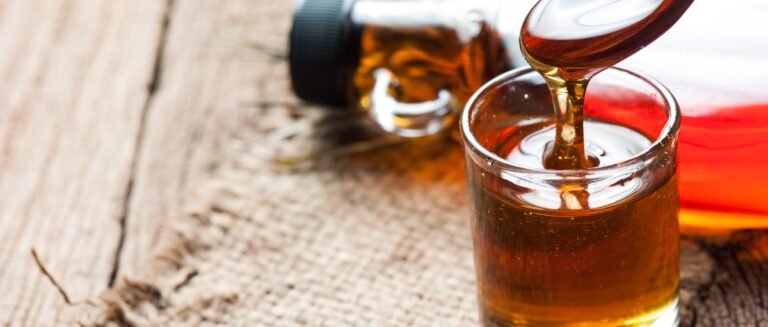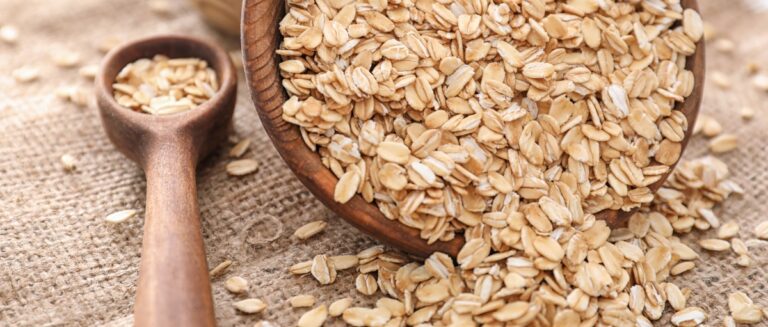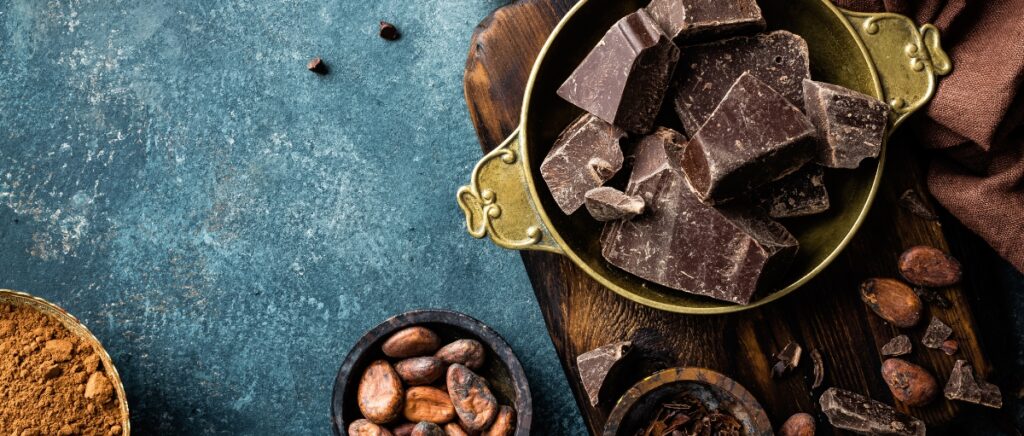Chocolate is one of life’s greatest pleasures, beloved by people of all ages around the world. In fact, did you know that the average American consumes nearly 12 pounds of chocolate each year? That’s a whole lot of deliciousness! But as we savor each sweet bite, many of us can’t help but wonder: Does chocolate go bad?
Chocolate has a much longer shelf life when stored properly than many other foods. However, factors like ingredient quality, processing, and storage conditions can all impact how long your chocolate stays fresh and tasty.
Whether you’re a chocolate connoisseur or an occasional indulger, understanding the ins and outs of chocolate freshness will help you get the most enjoyment out of every bite. So, let’s unwrap this delicious topic and discover the sweet science of chocolate shelf life!
So, Does Chocolate Expire?
The short answer is yes—chocolate can go bad, but it takes longer than you might expect. When stored properly, chocolate has a much longer shelf life than most other foods. However, factors like ingredient quality, processing methods, and storing chocolate in poor conditions can affect how long it stays fresh.
While chocolate doesn’t spoil the way dairy or produce does, it can lose its flavor, texture, and appearance over time. You may notice a dull or crumbly texture, or that your once-rich bar now tastes bland or stale.
In general, most types stay fresh for at least several months, with some lasting well over a year. Here’s a quick breakdown typical shelf life for different varieties of chocolate:
- Dark chocolate: 1-2 years
- Milk chocolate: 8-12 months
- White chocolate: 6-10 months
Remember, these are general guidelines, and how long chocolate stays good depends on storage conditions and ingredients. In most cases, it’s safe and tasty for a good stretch, as long as it’s stored correctly.
The Golden Rules of Chocolate Storage
Now that you know if chocolate is bad, you’re probably wondering how to make your favorite treats last as long as possible. The key is proper storage! Following simple guidelines, you can keep your chocolate fresh, flavorful, and free from pesky “bloom” for months or even years.
First and foremost, store chocolate in a cool, dry place away from direct sunlight. Ideal storage temperatures range from 60-70°F (15-21°C). Avoid places like the top of the fridge or near the stove, where temperatures can fluctuate widely.
It’s also crucial to protect your chocolate from moisture and odors. Chocolate is like a sponge—it can easily absorb the smells and flavors of things around it. Always store your chocolate in an airtight container, such as a resealable plastic bag or a tightly sealed jar, to prevent this.
You might be tempted to stash your chocolate in the fridge, but resist the urge! Refrigeration can actually ruin the texture and flavor of chocolate, causing a grayish coating called “sugar bloom” to form on the surface. This happens when moisture condenses on the chocolate, dissolving some of the sugar crystals.
However, there is one exception to the no-fridge rule. If you live in a very hot or humid climate where temperatures regularly exceed 75°F (24°C), refrigeration may be necessary to keep your chocolate from melting. In this case, be sure to wrap your chocolate tightly in plastic wrap or foil, then place it in an airtight container before refrigerating. When you’re ready to eat it, let the chocolate come to room temperature before unwrapping to avoid condensation.
To sum up, here are the golden rules of chocolate storage:
- Store in a cool, dry place between 60-70°F (15-21°C)
- Use an airtight container to protect from moisture and odors
- Avoid refrigeration unless you live in a very hot/humid climate
- If you must refrigerate, wrap the chocolate tightly and let it come to room temperature before unwrapping
By following these simple tips, you’ll be able to savor your chocolate at its best for weeks or even months to come. No more biting into a stale, lackluster bar—just pure, unadulterated chocolate bliss!
How to Know If Chocolate Is Bad
Wondering how to know if chocolate is bad? Look for these common signs:
- Appearance: Gray streaks or spots? That’s likely chocolate bloom or sugar bloom. Safe to eat, but the texture and appearance may suffer. Cracks or dryness can also be red flags. Additionally, cracks or dots on the surface of your chocolate may indicate that it has dried out and lost its freshness.
- Texture: Good chocolate is glossy and snaps cleanly. If it’s sticky, soft, or crumbly, it may have absorbed moisture or gone stale.
- Smell: Chocolate should smell rich, nutty, and inviting—like, well, chocolate! If your chocolate gives off a sour, musty, or rancid odor, it’s best to toss it out. Off smells clearly indicate that your chocolate has gone bad and may no longer be safe to consume.
- Taste: If your chocolate looks and smells okay but tastes off, trust your gut (literally). Chocolate that has gone bad may have a bitter, metallic, or otherwise unpleasant flavor. If you taste any sour, rancid, or stale notes, it’s time to say goodbye to that chocolate bar.
But Wait, Can I Still Eat Expired Chocolate?
If your bar is several months—or even a year—past its expiration date, you may be asking: is it still safe to eat?
In most cases, expired chocolate is safe to consume if it shows no signs of spoilage and has been stored properly. Thanks to its low moisture and high-fat content, it’s relatively resistant to bacteria. While it may not be as tasty, it won’t necessarily make you sick.
That said, always check for signs of spoilage (off smells, mold, etc.). If something seems off, it’s better to be safe and toss it.
Chocolate Shelf Life Saboteurs: Ingredients to Watch Out For
Plain bars last the longest, but mix-ins can speed up spoilage. Watch out for:
- Nuts or fruit: May turn rancid faster.
- Cream fillings: Perishable and prone to mold.
- Liquid centers: Caramel or liqueur can seep into the shell, affecting texture.
Always check the expiration date and store accordingly.
The Sweet Truth About Chocolate Freshness
In the end, while chocolate lasts a long time, it can still go bad. Stick to proper storage tips, and don’t worry if you find an old bar—as long as it looks, smells, and tastes fine, it’s likely still safe.
So treat yourself to that flawless bar of dark chocolate or silky truffle—just remember to store it properly and enjoy it while it’s still at its best.
Life’s too short for stale treats. In 2023, people aged 30–44 were the biggest consumers of chocolate. By understanding the ins and outs of chocolate freshness, you’ll ensure every bite is as enjoyable as the first. Happy snacking!
Sources
The Washington Post. (2018) The big number: $22 billion a year on chocolate—is that healthy? Retrieved from https://www.washingtonpost.com/national/health-science/the-big-number22-billion-a-year-on-chocolate-is-that-healthy/2018/02/09/6a6cee4c-0d1a-11e8-8890-372e2047c935_story.html
Puratos. (n.d.) What is the shelf life of chocolate products? Retrieved from https://www.puratos.com/knowledge-base/what-is-the-shelf-life-of-chocolate-products
Michel Cluizel Chocolate Blog. (2023) How to store chocolate: Keeping it fresh. Retrieved from https://cluizel.us/blogs/michel-cluizel-chocolate-blog-spot/how-to-store-chocolate-keeping-it-fresh
Chocolate Tempering Machines. (n.d.) What is chocolate bloom? Retrieved from https://www.chocolatetemperingmachines.com/pages/what-is-chocolate-bloom
ScienceDirect. (2022) Evaluation of chocolate production techniques: An overview. Retrieved from https://www.sciencedirect.com/science/article/abs/pii/S0956713522004856
Statista. (2023) Confectionery market age distribution of consumers in the United States. Retrieved from https://www.statista.com/forecasts/1384450/confectionery-market-age-distribution-of-consumers-in-the-united-states











